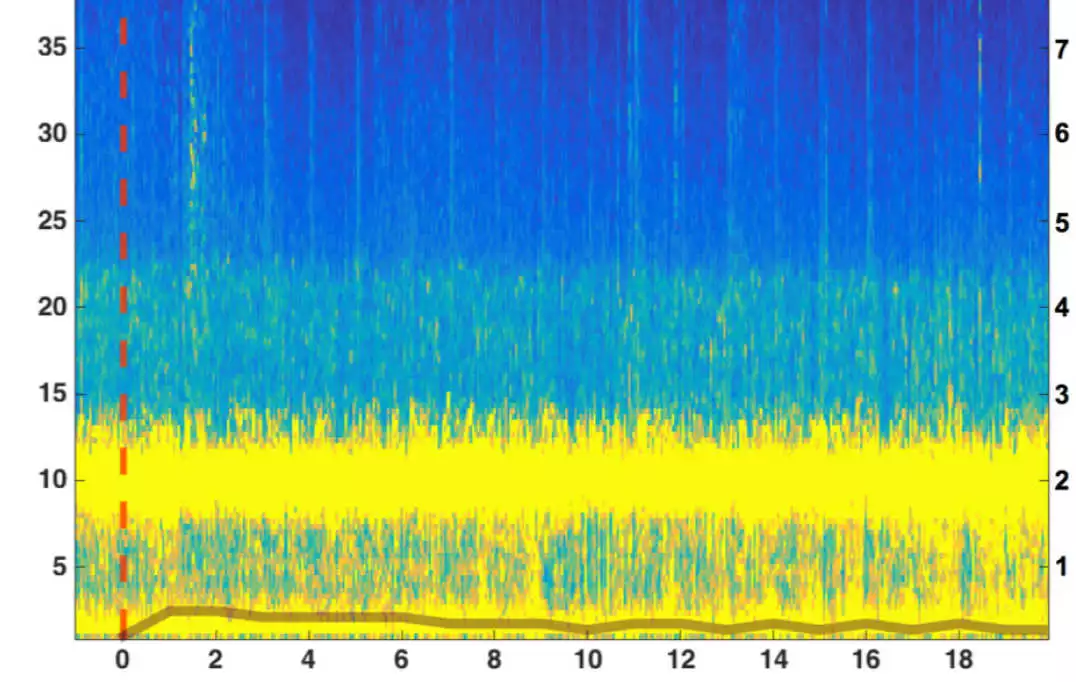An intriguing new study, led by scientists from Imperial College London’s recently launched Centre for Psychedelic Research, is shedding light on how one of the world’s most powerful psychedelic substances alters brain activity, rapidly shifting a person’s brainwaves into a state that resembles dreaming.
Dimethyltryptamine, or DMT, is a profoundly potent yet very short-acting psychedelic. When smoked or injected DMT’s overwhelming effects can take hold of a person in seconds. However, the drug is rapidly metabolized by the body, returning a person to normality in around half an hour.
DMT is the primary psychoactive component in ayahuasca, a traditional Amazonian psychedelic medicine. However, to make DMT orally active, and last a number of hours, it must be combined with compounds known as monoamine oxidase inhibitors. In simplistic terms, an ayahuasca experience is a little like a 15-minute DMT journey but slowed down to last anywhere from six to 10 hours.
The new research from Imperial College London capitalized on the short-acting nature of DMT to conduct a temporal investigation into how the drug alters a person’s brain activity across a 20-minute experience. Electroencephalography (EEG) was selected as the best imaging modality for the study as it was the most detailed way to capture the temporal effects of DMT on brain activity over a very short period of time.
Thirteen volunteers were administered DMT infusions while wearing EEG caps to capture brainwave activity. Lead author on the study, Christopher Timmermann, says the brain activity seen in his team’s study was quite unlike what has been identified with other more commonly known psychedelics.
“The changes in brain activity that accompany DMT are slightly different from what we see with other psychedelics, such as psilocybin or LSD, where we see mainly only reductions in brainwaves,” Timmermann says. "From the altered brainwaves and participants’ reports, it’s clear these people are completely immersed in their experience – it’s like daydreaming only far more vivid and immersive, it’s like dreaming but with your eyes open.”
The general pattern observed in the study was a collapse of alpha and beta wave brain activity in the first minutes of the drug experience. These brainwaves usually correlate with waking states, however, their drop did not result in a shift to a reduced state of consciousness similar to that seen in general anaesthesia. Instead, the researchers saw a rapid increase in delta and theta brainwave activity. These delta/theta oscillations have often been linked with transitions through different sleep phases, including REM dreaming, but the rhythmicity of these oscillations in the DMT experience are certainly unique.


“DMT is a particularly intriguing psychedelic,” explains Robin Carhart-Harris, head of Imperial’s Centre for Psychedelic Research. “The visual vividness and depth of immersion produced by high-doses of the substance seems to be on a scale above what is reported with more widely studied psychedelics such as psilocybin or ‘magic mushrooms’. It’s hard to capture and communicate what it is like for people experiencing DMT but likening it to dreaming while awake or a near-death experience is useful.”
Interestingly, one general observation seen in the study that does fit with previous psychedelic brain imaging research was a distinct increase in what is called signal diversity. The term essentially acts as a measure for novel neural activity. The more complex, or chaotic, the dynamics of brain activity, the higher the signal diversity.
It has been previously documented that increased alpha wave oscillations and limited signal diversity can be linked to conditions such as depression. So one hypothesis raised by this new research is that the mechanism explaining the antidepressant potential of certain psychedelics may be the way these compounds so dramatically disrupt general patterns of brain activity.
While a great deal of ongoing research is currently focused on the clinical potential of psilocybin, the psychoactive compound found in magic mushrooms, there has been relatively little work examining the medical uses of DMT. Striking research published earlier this year from a team at Johns Hopkins University revealed a single dose of 5-MeO-DMT (a powerful derivative of DMT) conferred extraordinary mood-enhancing effects in the vast majority of tested subjects.
The ultimate clinical potential of DMT as a medicine is still unknown but Carhart-Harris suggests his team’s research is more acutely focused on gaining insight into how our brains generate consciousness.
“Our sense it that research with DMT may yield important insights into the relationship between brain activity and consciousness, and this small study is a first step along that road,” says Carhart-Harris.
The new study was published in the journal Scientific Reports.
Source: Imperial College London





